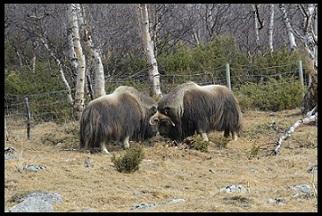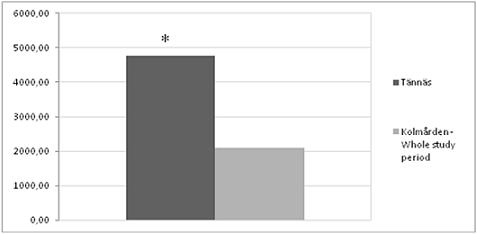Results

The reason for this study was to investigate if we can prepare captive musk ox for a reintroduction into an established wild population in the future. The animals need to go through special preparations in form of higher activity to increase the body condition and improve the hoof status. In captivity it is hard to create naturally environment for the musk ox because of the limitations of enclosure size, and the animals habits of spending a lot of time lying on the ground, ruminating. In the end of the study we can demonstrate that the activity of the musk ox is affected both by the size of the enclosure, and the temperature. The hoof status can be improved in an environment with adapted substrate, as well as by improve the condition of the animal. All this could prepare a captive musk ox for a reintroduction into an established wild population in the future.
The comparing of musk ox activity between the Tännäs musk ox and Kolmården animal, shows that the animal in Tännäs was more active (p <0.05). One reason for this could be that the animals in Tännäs have a larger enclosure and the habitat was closer to the wilds ones habitat. Although a study by Kreeger et al. (1996), of grey wolfs activity patterns, which were housed in small vs. large enclosure, showed that the enclosure size did not have any effect on wolfs activity. One reason for their results could be that the sample was too small, both in numbers of animals and in equipment’s (GPS-collars).

Responsible for this page:
Director of undergraduate studies Biology
Last updated:
05/25/11
